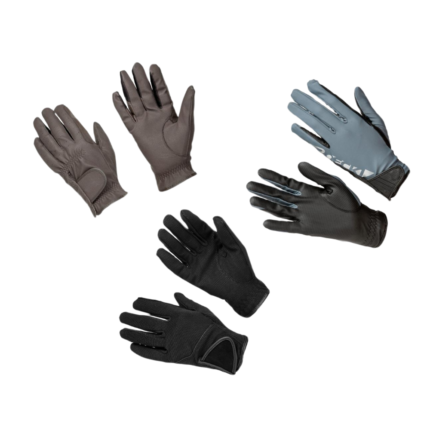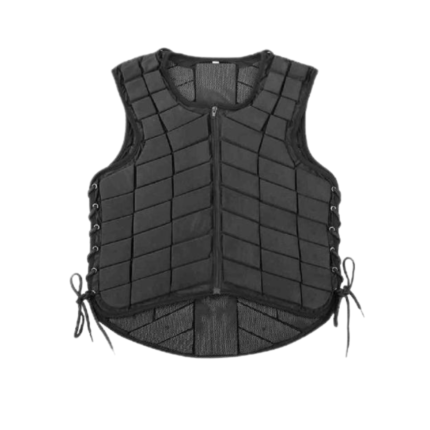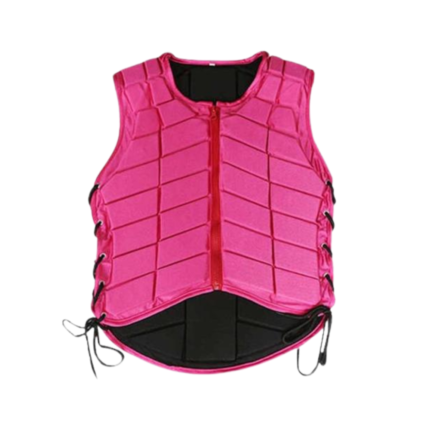A horse riding safety jacket, also known as an equestrian body protector or riding vest, is a specialized garment designed to provide protection to the rider’s torso in the event of a fall or impact while horseback riding. Here’s a detailed overview of a horse riding safety jacket:
Functionality
- Impact Protection: Safety jackets are constructed with shock-absorbing materials such as foam or gel inserts to reduce the impact of falls or collisions with the ground or other objects.
- Rib and Spine Protection: Many safety jackets feature additional padding or panels to protect the ribs and spine, which are vulnerable areas during falls.
- Flexibility: Despite offering substantial protection, safety jackets are designed to allow for freedom of movement, enabling the rider to maintain flexibility and perform riding maneuvers comfortably.
- Compression Fit: Safety jackets typically have a snug, compression fit to ensure they stay securely in place during riding activities without restricting movement.
Design and Construction
- Foam Padding: The main component of a safety jacket is foam padding or inserts strategically placed to absorb impact energy and reduce the risk of injury.
- Panel Construction: Safety jackets may consist of multiple panels for better flexibility and coverage. Some jackets feature separate panels for the chest, back, ribs, and shoulders.
- Breathable Fabric: The outer shell of the jacket is often made from breathable, lightweight materials to promote airflow and prevent overheating during riding.
- Adjustable Straps: Many safety jackets feature adjustable straps or Velcro closures to allow for a customized fit and ensure the jacket stays securely in place.
- Certification Standards: Some safety jackets are certified to meet specific safety standards established by organizations such as ASTM International or the European Union’s CE Marking.
Types of Safety Jackets
- Level of Protection: Safety jackets are available in different levels of protection, ranging from basic foam padding to advanced designs with multiple layers of impact-resistant materials.
- Discipline-Specific: There are safety jackets tailored for specific equestrian disciplines, such as eventing, show jumping, or trail riding, with features optimized for the demands of each discipline.
- Gender-Specific: Some manufacturers offer safety jackets designed specifically for male or female riders to accommodate differences in body shape and fit.
Usage and Considerations
- Fit: Ensuring the safety jacket fits properly is crucial for maximum effectiveness. Riders should follow manufacturer guidelines for sizing and adjustability to achieve a snug but comfortable fit.
- Maintenance: Regular inspection and maintenance of the safety jacket are important to ensure it remains in good condition and retains its protective properties. Follow manufacturer instructions for cleaning and care.
- Replacement: Safety jackets should be replaced if they show signs of wear, damage, or compression of the foam padding, as they may no longer provide adequate protection.
Benefits
- Injury Prevention: Safety jackets help reduce the risk of serious injuries to the torso, ribs, and spine in the event of a fall or impact.
- Confidence: Wearing a safety jacket can boost a rider’s confidence, knowing they have an extra layer of protection during riding activities.
- Peace of Mind: For riders engaging in high-risk activities such as jumping or eventing, a safety jacket provides peace of mind knowing they are taking proactive measures to mitigate injury risks









Reviews
There are no reviews yet.